*NURSING > TEST BANK > Chapter 02: Transitions in Care Perry et al.: Canadian Clinical Nursing Skills & Techniques, 1st Edi (All)
Chapter 02: Transitions in Care Perry et al.: Canadian Clinical Nursing Skills & Techniques, 1st Edition TEST BANK
Document Content and Description Below
Chapter 02: Transitions in Care Perry et al.: Canadian Clinical Nursing Skills & Techniques, 1st Edition TEST BANK MULTIPLE CHOICE 1. The patient is scheduled to go home after having coronary ... angioplasty. What would be the most effective way to provide discharge teaching to this patient? a. Provide him with information on health care websites. b. Provide him with written information on what he has to do. c. Sit and carefully explain what is required before his follow-up. d. Use a combination of verbal and written information. ANS: D For discharge teaching, use a combination of verbal and written information. This most effectively provides patients with standardized care information, which has been shown to improve patient knowledge and satisfaction. DIF: Cognitive Level: Application REF: Skill 2.3 (Teaching) OBJ: Identify the ongoing needs of patients in the discharge planning process. TOP: Admission to Discharge Process KEY: Nursing Process Step: Implementation MSC: NCLEX: Safe and Effective Care Environment 2. While preparing for the patient’s discharge, the nurse uses a discharge planning checklist and notes that the patient is concerned about going home because she has to depend on her family for care. The nurse realizes that successful recovery at home is often based on a. the patient’s willingness to go home. b. the family’s perceived ability to care for the patient. c. the patient’s ability to live alone. d. allowing the patient to make her own arrangements. ANS: B Discharge from a facility is stressful for a patient and family. Before a patient is discharged, the patient and family need to know how to manage care in the home and what to expect with regard to any continuing physical problems. Family caregiving is a highly stressful experience. Family members who are not properly prepared for caregiving are often overwhelmed by patient needs, which can lead to unnecessary hospital readmissions. DIF: Cognitive Level: Analysis REF: Skill 2.3: Discharging Patients OBJ: Identify the ongoing needs of patients in the discharge planning process. TOP: Medication Reconciliation KEY: Nursing Process Step: Assessment MSC: NCLEX: Psychosocial Integrity 3. The patient arrives in the emergency department and is complaining of severe abdominal pain and vomiting, and is severely dehydrated. The physician prescribes intravenous (IV) fluids for the dehydration and an IV antiemetic for the patient. However, the patient states that she is fearful of This study source was downloaded by 100000802531269 from CourseHero.com on 01-08-2022 07:37:10 GMT -06:00 needles and adamantly refuses to have an IV started. The nurse explains the importance of and rationale for the prescribed treatment, but the patient continues to refuse. What should the nurse do? a. Summon the nurse technician to hold the arm down while the IV is inserted. b. Use a numbing medication before inserting the IV. c. Document the patient’s refusal and notify the physician. d. Tell the patient that she will be discharged without care unless she complies. ANS: C Patients have the right to accept or reject medical treatment. The patient has the right to refuse treatment. Refusal should be documented and the health care provider consulted about alternate treatment. DIF: Cognitive Level: Application REF: Box 2.3: Patients’ Rights OBJ: Describe the role communication plays in maintaining continuity of care through a patient’s admission, transition, and discharge from an acute care agency. TOP: Patient Self-Determination Act KEY: Nursing Process Step: Implementation MSC: NCLEX: Safe and Effective Care Environment 4. An unconscious patient is admitted through the emergency department. How and when is identification of the patient made? a. Determined only when the patient is able b. Postponed until family members arrive c. Given an anonymous name under the “blackout” procedure d. Determined before treatment is started ANS: B If a patient is unconscious, identification often is not made until family members arrive. Delaying treatment can cause deterioration of the patient’s condition. Blackout procedures are intended mainly to protect crime victims. DIF: Cognitive Level: Application REF: Skill 2.1 (Admission Process) OBJ: Describe the role communication plays in maintaining continuity of care through a patient’ s admission, transition, and discharge from an acute care agency. TOP: The Unconscious Patient KEY: Nursing Process Step: Implementation MSC: NCLEX: Physiological Integrity 5. During admission of a patient, the nurse notes that the patient speaks another language and may have difficulty understanding English. What should the nurse do to facilitate communication? a. Use hand gestures to explain. b. Request and wait for an interpreter. c. Work with the family to gather information. d. Complete as much of the admission assessment as possible using simple phrases. ANS: B If patient does not speak, read, or understand English, arrange for a professional translator to help with the nursing assessment. Use telephone interpreter services as a supplemental system when an interpreter is needed instantly or when services are needed in an unusual or infrequently encountered language. Translation services are preferable to using caregiver or family members to promote effective communication. DIF: Cognitive Level: Application REF: Skill 2.1 (Admission Process) OBJ: Describe the role communication plays in maintaining continuity of care through a patient’s admission, transition, and discharge from an acute care agency. TOP: The Patient Who Does Not Speak English KEY: Nursing Process Step: Implementation MSC: NCLEX: Safe and Effective Care Environment 6. The patient has been admitted to the emergency department after being physically abused. She is frightened that her attacker may find her in the hospital and try to kill her. What should the nurse tell her? a. She is safe in the hospital, and she needs to provide her name. b. She can be admitted to the hospital without anyone knowing it. c. Her records will be used as evidence in the trial. d. Because she has come to the hospital, she has to be examined by the doctor. ANS: B A patient who has been a victim of crime can be admitted anonymously under an agency’s “blackout” or “do not publish” procedure. DIF: Cognitive Level: Analysis REF: Skill 2.1 (Admission Process) OBJ: Explain the role of a patient’s caregiver in the admission, transition, or discharge process. TOP: Victim of Crime KEY: Nursing Process Step: Implementation MSC: NCLEX: Psychosocial Integrity 7. The patient is admitted to the critical care unit (CCU) after having been in a motor vehicle accident. He was intubated in the emergency department and needs to receive two units of packed red blood cells. He is conscious but is indicating that he is in pain by guarding his abdomen. To admit this patient, the nurse first will focus on a. examining the patient and treating the pain. b. orienting the family to the CCU visitation policy. c. making sure that the consent forms are signed. d. informing the patient of his rights. ANS: A When a critically ill patient reaches a hospital’s nursing division, the patient immediately undergoes extensive examination and treatment procedures. Little time is available for the nurse to orient the patient and family to the division or to learn of their fears or concerns. DIF: Cognitive Level: Analysis REF: Skill 2.1 (Admission Process) OBJ: Explain the role of a patient’s caregiver in the admission, transition, or discharge process. TOP: Role of the Nurse KEY: Nursing Process Step: Implementation MSC: NCLEX: Physiological Integrity 8. The nurse is admitting the patient to the medical unit. The patient indicates that he has had several surgeries in the past and has had diabetes for the past 15 years. He also stated that he is allergic to morphine. What does this information prompt the nurse to do next? a. Provide the patient with an allergy armband and document his allergies. b. Postpone routine admission procedures immediately. c. Ask the patient if he wants a smoking room. d. Have all family or friends leave the room. ANS: A Provide the patient with an allergy armband listing allergies to foods, drugs, latex, or other substances; document allergies according to hospital policy. Postpone routine admission procedures only if the patient is having acute physical problems. Smoking is prohibited throughout the hospital, and family or friends can remain if the patient wishes to have them assist with changing into a hospital gown or pajamas. DIF: Cognitive Level: Analysis REF: Skill 2.1 (Admission Process) OBJ: Explain the role of a patient’s caregiver in the admission, transition, or discharge process. TOP: Allergies KEY: Nursing Process Step: Implementation MSC: NCLEX: Physiological Integrity 9. At what age is separation anxiety a common problem? a. School-aged children b. Preschoolers c. Middle infancy d. Newborns ANS: C Separation anxiety is most common from middle infancy throughout the toddler years, especially from ages 16 to 30 months. Preschoolers are better able to tolerate brief periods of separation, but their protest behaviours are more subtle than those of younger children (e.g., refusal to eat, difficulty sleeping, withdrawing from others). School-aged children are able to cope with separation but have an increased need for parental security and guidance. DIF: Cognitive Level: Synthesis REF: Skill 2.1 (Pediatric) OBJ: Explain the role of a patient’s caregiver in the admission, transition, or discharge process. TOP: Pediatric Considerations KEY: Nursing Process Step: Assessment MSC: NCLEX: Psychosocial Integrity 10. The patient is being transferred from the emergency department to another institution for treatment. Which of the following cannot be delegated to an unregulated care provider (UCP)? a. Helping the patient get dressed b. Gathering intravenous line equipment to go with the patient c. Escorting the patient to the transport area d. Assessing the patient’s respiratory status before transport ANS: D The assessment and decision making conducted during transfers cannot be delegated to UCPs. UCPs can assist the patient with dressing, can gather and secure the patient’s personal belongings and any necessary equipment, and can escort the patient to the nursing unit or transport area. DIF: Cognitive Level: Application REF: Skill 2.2 (Delegation and Collaboration) OBJ: Explain the role of a patient’s caregiver in the admission, transition, or discharge process. TOP: Delegation KEY: Nursing Process Step: Implementation MSC: NCLEX: Safe and Effective Care Environment 11. When does the plan for patient discharge from a health care facility begin? a. At admission b. After a medical diagnosis has been determined c. When the patient’s physical needs are identified d. After a home environment assessment is completed ANS: A Planning for discharge begins at admission and continues throughout the patient’s stay in the agency. Separating the processes of admission and discharge is a critical error; the two are simultaneous and continuous. DIF: Cognitive Level: Comprehension REF: Principles for Practice OBJ: Explain the role of a patient’s caregiver in the admission, transition, or discharge process. TOP: Discharge Planning KEY: Nursing Process Step: Implementation MSC: NCLEX: Safe and Effective Care Environment 12. The phase of the discharge process where medical attention dominates discharge planning efforts is known as the phase. a. transitional b. continuing c. acute d. multidisciplinary ANS: C The discharge process occurs in three phases: acute, transitional, and continuing care. In the acute phase, medical attention dominates discharge planning efforts. During the transitional phase, the need for acute care is still present, but its urgency declines and patients begin to address and plan for their future health care needs. In the continuing care phase, patients participate in planning and implementing continuing care activities needed after discharge. There is no multidisciplinary stage; the discharge planning process is comprehensive and multidisciplinary. DIF: Cognitive Level: Comprehension REF: Skill 2.3: Discharging Patients OBJ: Explain the purpose and importance of discharge planning. TOP: Discharge Planning KEY: Nursing Process Step: Implementation MSC: NCLEX: Physiological Integrity 13. Once a patient’s discharge has been completed, which activity may be delegated to unregulated care providers (UCPs)? a. Provision of prescriptions to the patient b. Completion of the discharge summary c. Gathering of the patient’s personal care items d. Provision of instructions on community health resources ANS: C The assessment, care planning, and instruction included in discharging patients cannot be delegated to UCPs. The nurse may direct the UCP to gather and secure the patient’s personal items and any supplies that accompany the patient. DIF: Cognitive Level: Application REF: Skill 2.3 (Delegation and Collaboration) OBJ: Explain the role of a patient’s caregiver in the admission, transition, or discharge process. TOP: Discharge Planning KEY: Nursing Process Step: Implementation MSC: NCLEX: Safe and Effective Care Environment 14. The nurse is providing discharge instruction to an 80-year-old patient and her daughter. The patient lives in a two-story home. When asked if the patient has difficulty climbing stairs, the patient says “No,” but the nurse notices a look of surprise on the daughter’s face. What should the nurse do in this circumstance? a. Speak with the daughter separately. b. Cancel the discharge immediately. c. Order a visiting nurse consult. d. Notify the physician. ANS: A Patients and family members often disagree on the health care needs of a patient after discharge. Identifying these discrepancies early leads to more accurate development of the discharge plan. It is often necessary to talk with the patient and family separately to learn about their true concerns or doubts. DIF: Cognitive Level: Application REF: Teaching OBJ: Describe the role communication plays in maintaining continuity of care through a patient’s admission, transition, and discharge from an acute care agency. TOP: Discharge Planning KEY: Nursing Process Step: Implementation MSC: NCLEX: Safe and Effective Care Environment 15. The patient has decided that he would like to create an advance directive. The nurse is asked if she would be a witness. What is the best response for the nurse to make to this request? a. Agree to be a witness. b. Refuse to be a witness. c. Contact social work. d. Contact the physician. ANS: C A social worker often fulfills this requirement. Witnesses for an advance directive document should not be medical personnel, and direct refusal does not meet the nurse’s obligation to meet the patient’s needs. Referral to a department that can ensure this service is required. DIF: Cognitive Level: Application REF: Box 2.4: Advance Directives OBJ: Explain the role of a patient’s caregiver in the admission, transition, or discharge process. TOP: Advance Directives KEY: Nursing Process Step: Implementation MSC: NCLEX: Safe and Effective Care Environment 16. Completing and documenting an accurate medication history from the patient is the important first step in the process. a. admission b. medication reconciliation c. discharge d. person-centred care ANS: B Medication reconciliation compares the patient’s home medication list with the medications prescribed at admission, transfer, or discharge to avoid medication errors such as omissions, duplications, dosing errors, or drug interactions. Medication reconciliation is an important part of the admission process. DIF: Cognitive Level: Understanding REF: Evidence-Informed Practice OBJ: Explain the role of a patient’s caregiver in the admission, transition, or discharge process. TOP: Medication Reconciliation KEY: Nursing Process Step: Planning MSC: NCLEX: Physiological Integrity 17. What is the name of a document that provides a patient’s instructions in terms of future medical care or that designates another person(s) to make medical decisions if the individual loses decision-making capacity is known? a. Admission document b. Medication reconciliation form c. Discharge record d. Advance directive ANS: D An advance directive is a document that provides a patient’s instructions about future medical care or that designates another person(s) to make medical decisions if the individual loses decision- making capacity. An advance directive conveys the patient’s choice in continuing medical care when the patient is unable to speak or make decisions. DIF: Cognitive Level: Understanding REF: Box 2.4: Advance Directives OBJ: Explain the role of a patient’s caregiver in the admission, transition, or discharge process. TOP: Advance Directives KEY: Nursing Process Step: Diagnosis MSC: NCLEX: Safe and Effective Care Environment MULTIPLE RESPONSE 1. The patient is being admitted to the intensive care department with multiple fractures and internal bleeding. Which of the following are considered roles of the nurse in this situation? (Select all that apply.) a. Anticipate physical and social deficits to resuming normal activities. b. Involve the family and significant others in the plan of care. c. Assist in making health care resources available to the patient. d. Identify the psychological needs of the patient. ANS: A, B, C, D The nurse identifies patients’ ongoing health care needs; anticipates physical, psychological, and social deficits that have implications for resuming normal activities; involves family and significant others in a plan of care; provides health education; and assists in making health care resources available to the patient. Separating the processes of admission and discharge is a critical error; the two are simultaneous and continuous. DIF: Cognitive Level: Application REF: Skill 2.1 (Admission Process) OBJ: Explain the role of a patient’s caregiver in the admission, transition, or discharge process. TOP: Admission to Discharge Process KEY: Nursing Process Step: Planning MSC: NCLEX: Physiological Integrity [Show More]
Last updated: 1 year ago
Preview 1 out of 17 pages
Instant download

Instant download
Reviews( 0 )
Document information
Connected school, study & course
About the document
Uploaded On
Jan 17, 2022
Number of pages
17
Written in
Additional information
This document has been written for:
Uploaded
Jan 17, 2022
Downloads
0
Views
38




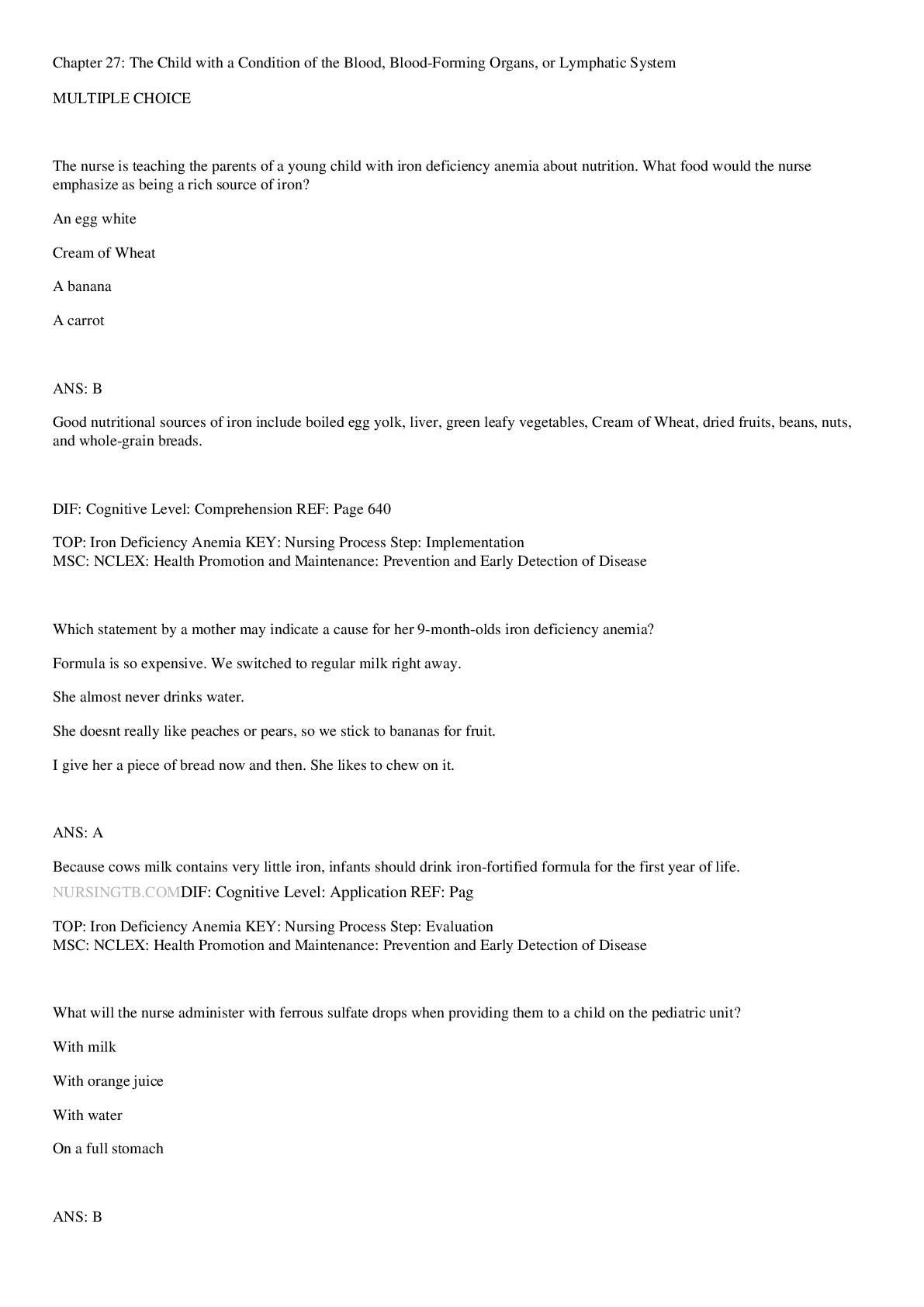



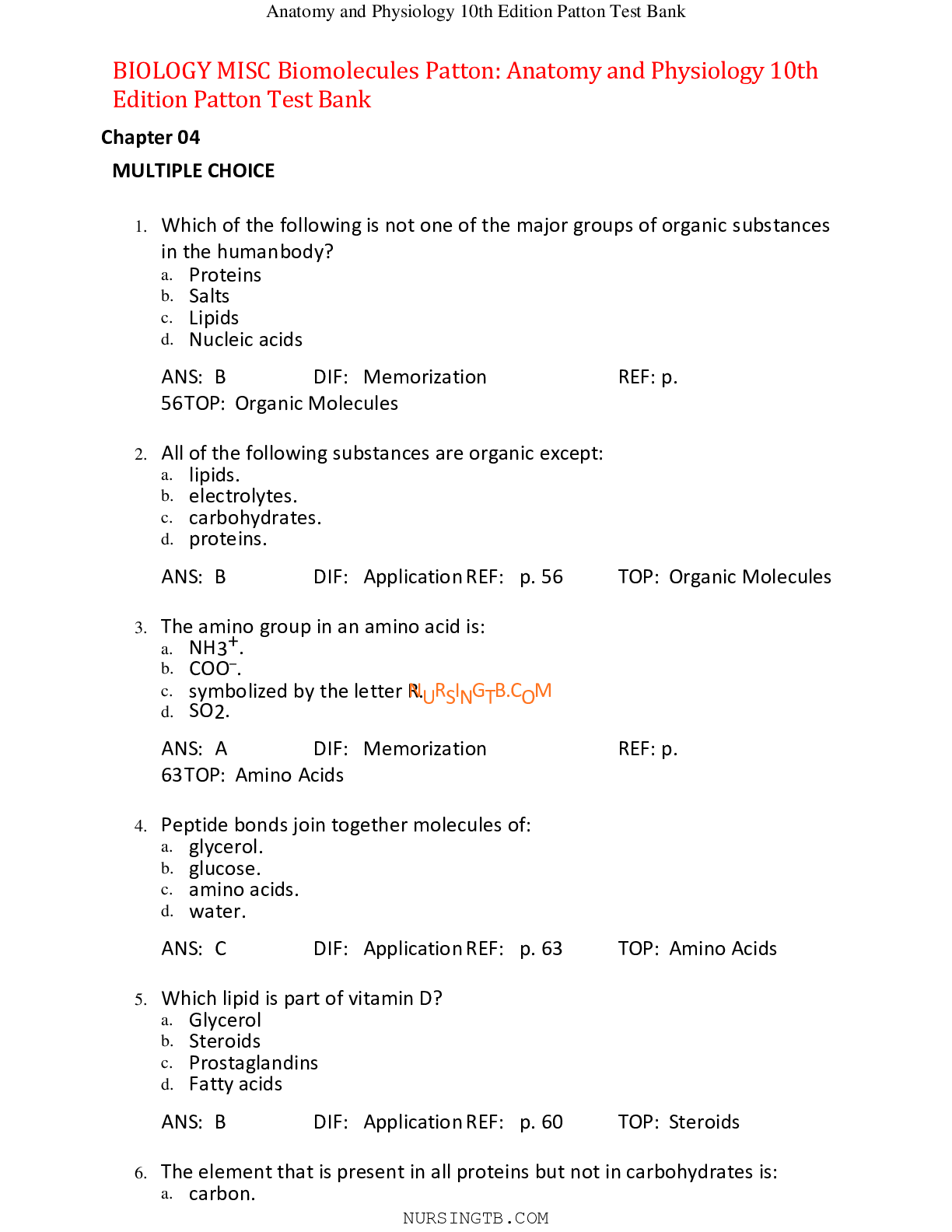
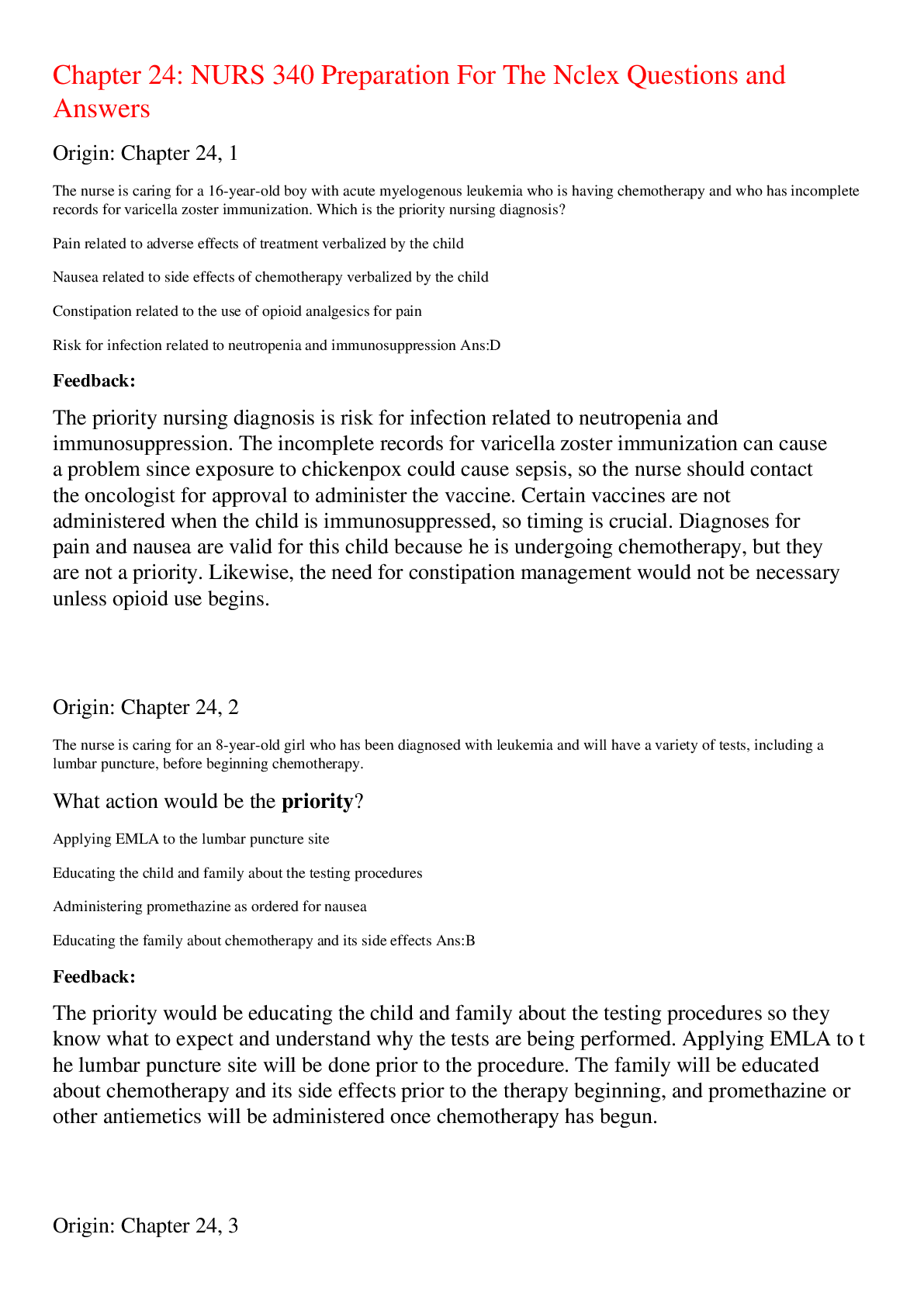
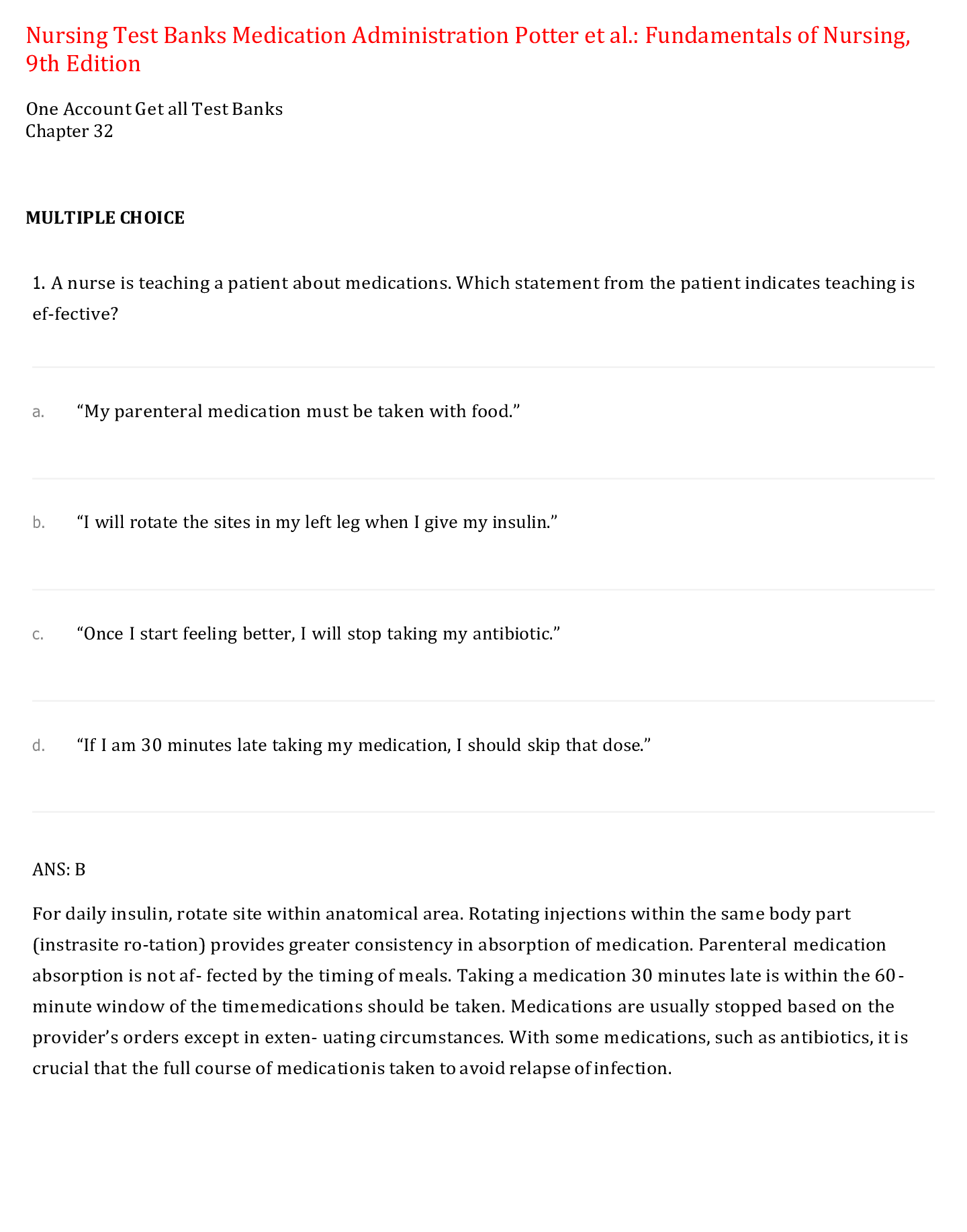

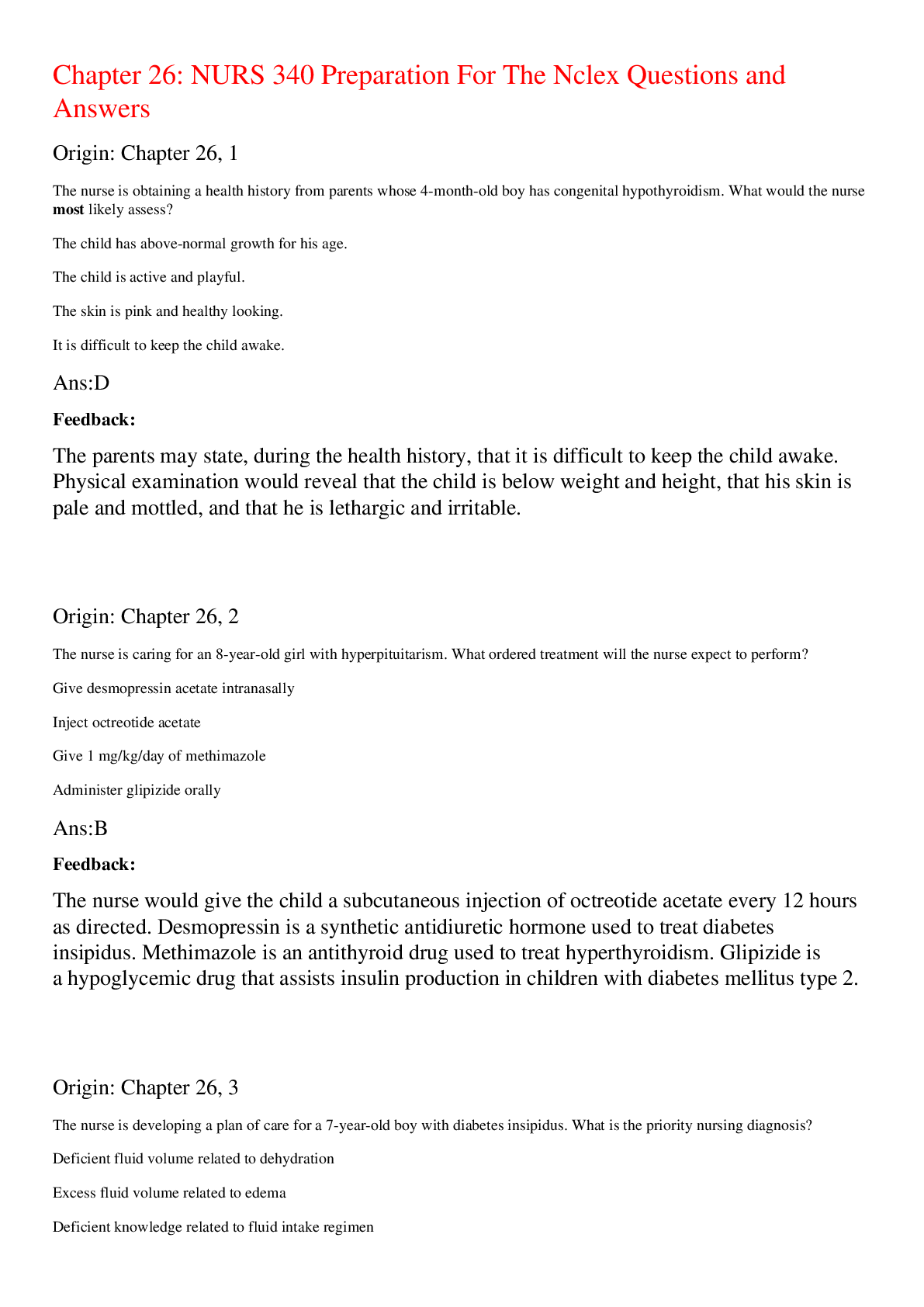
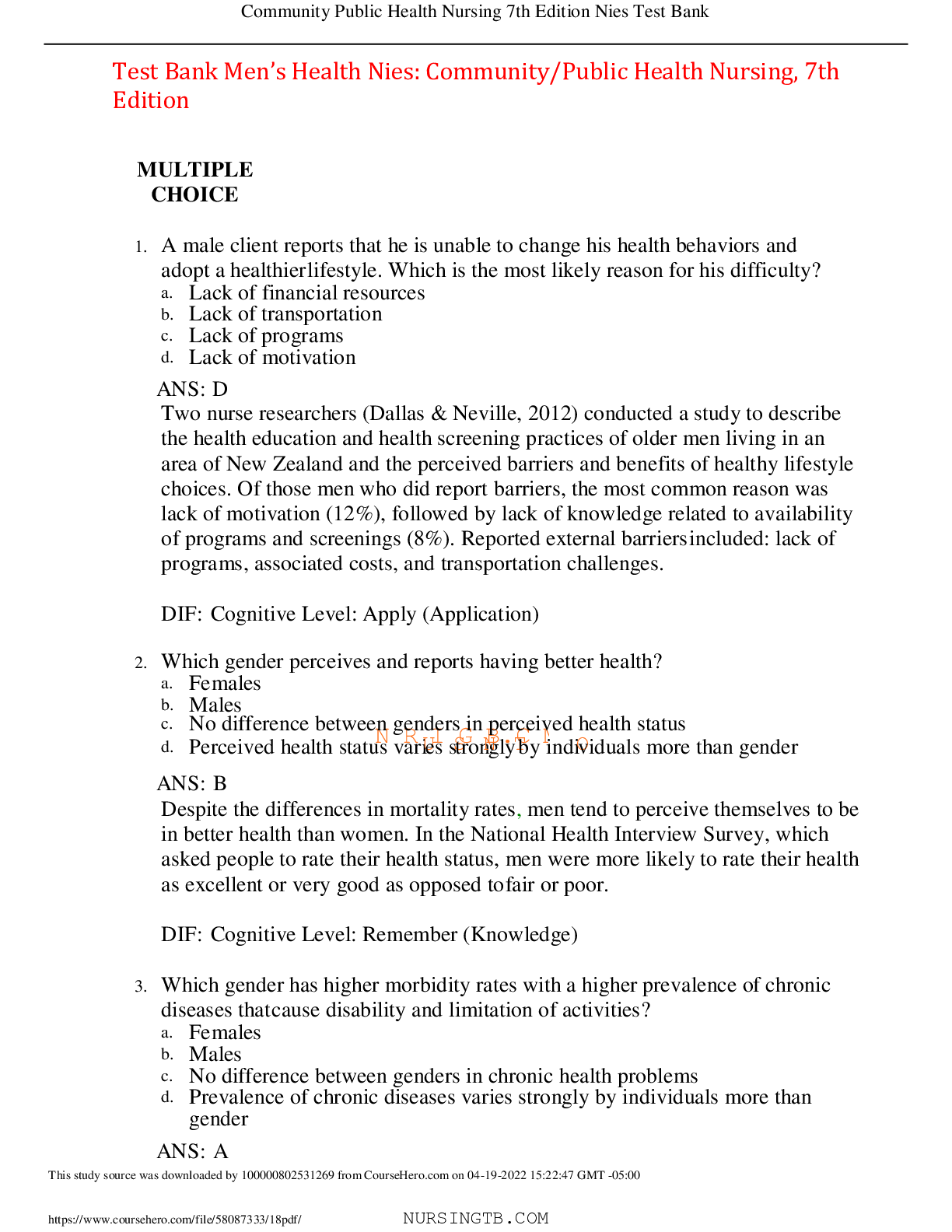
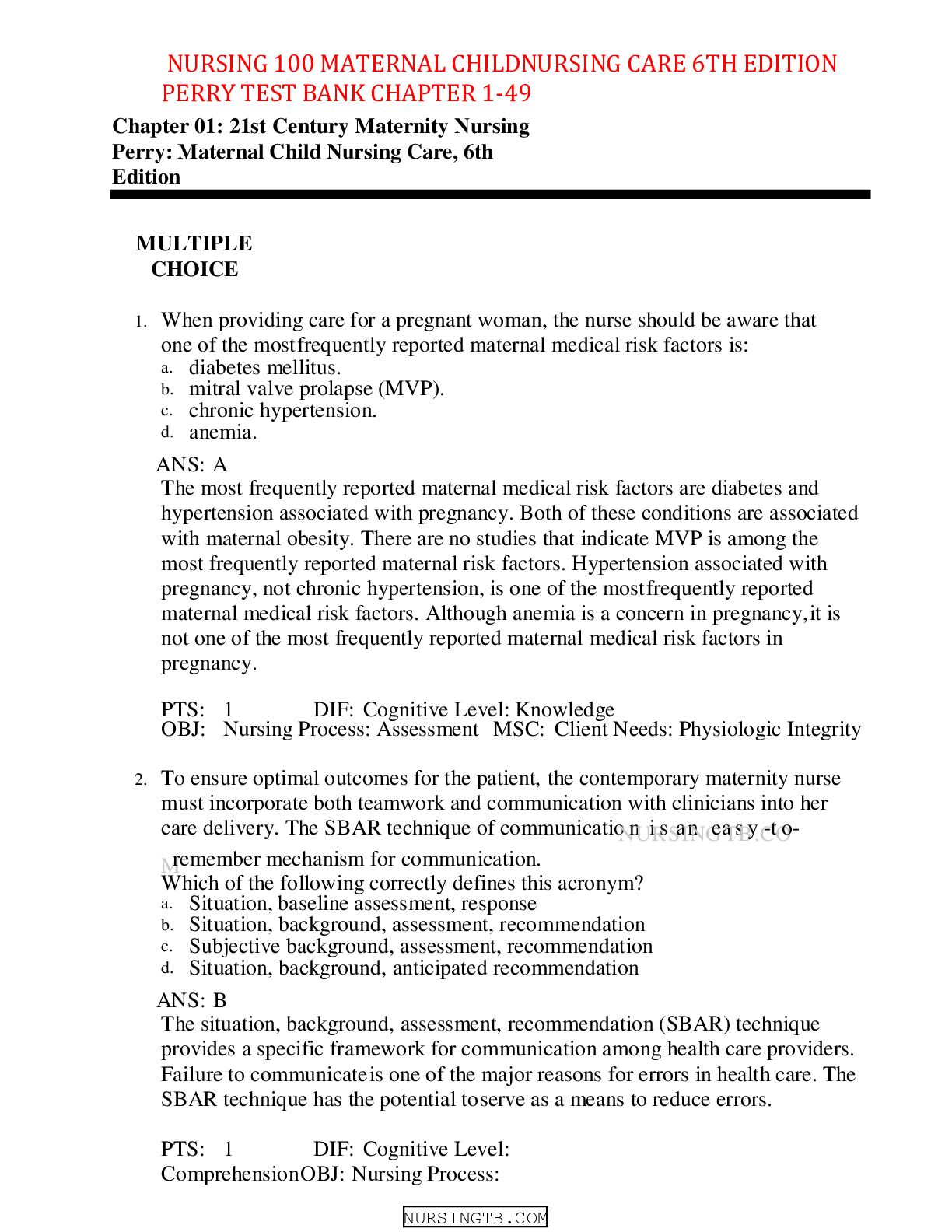

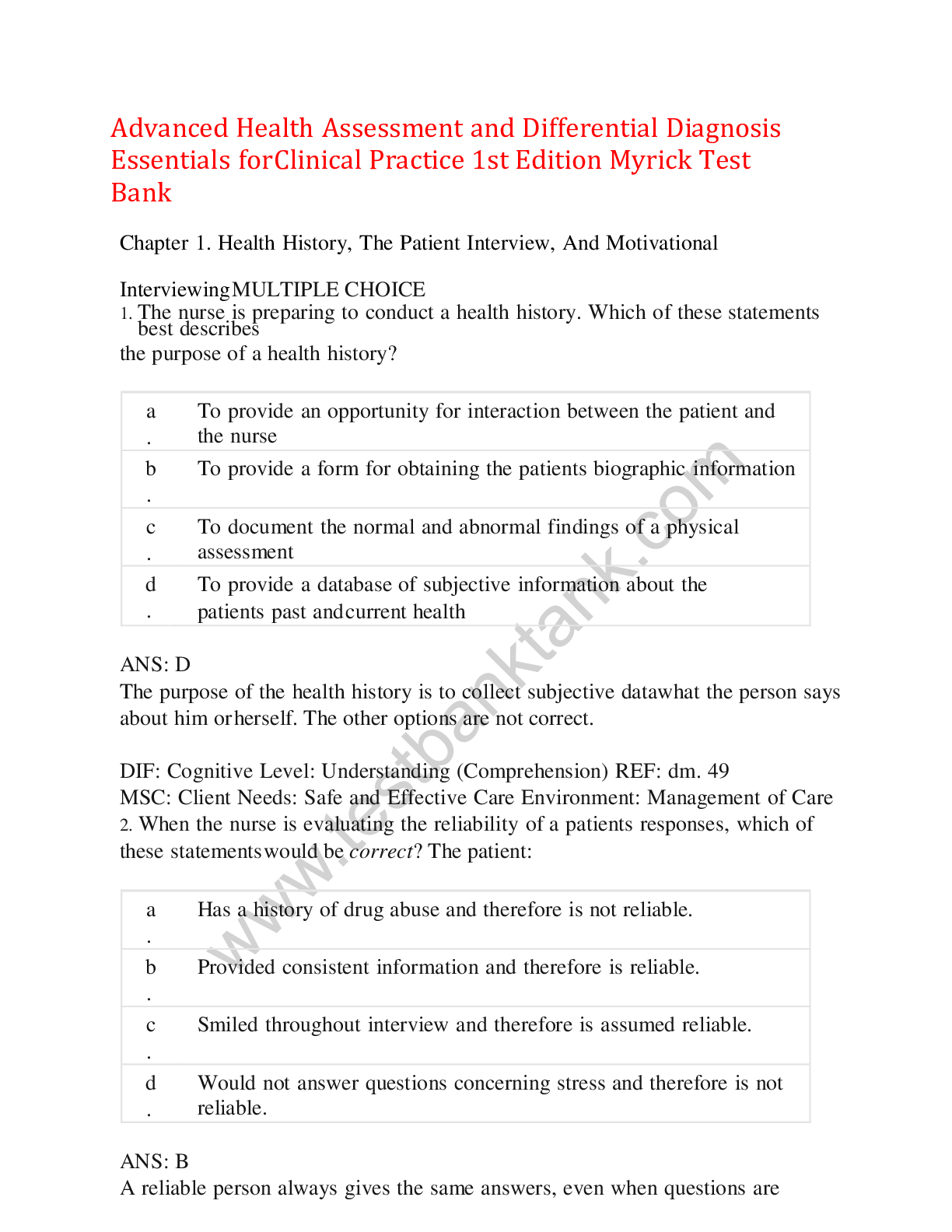
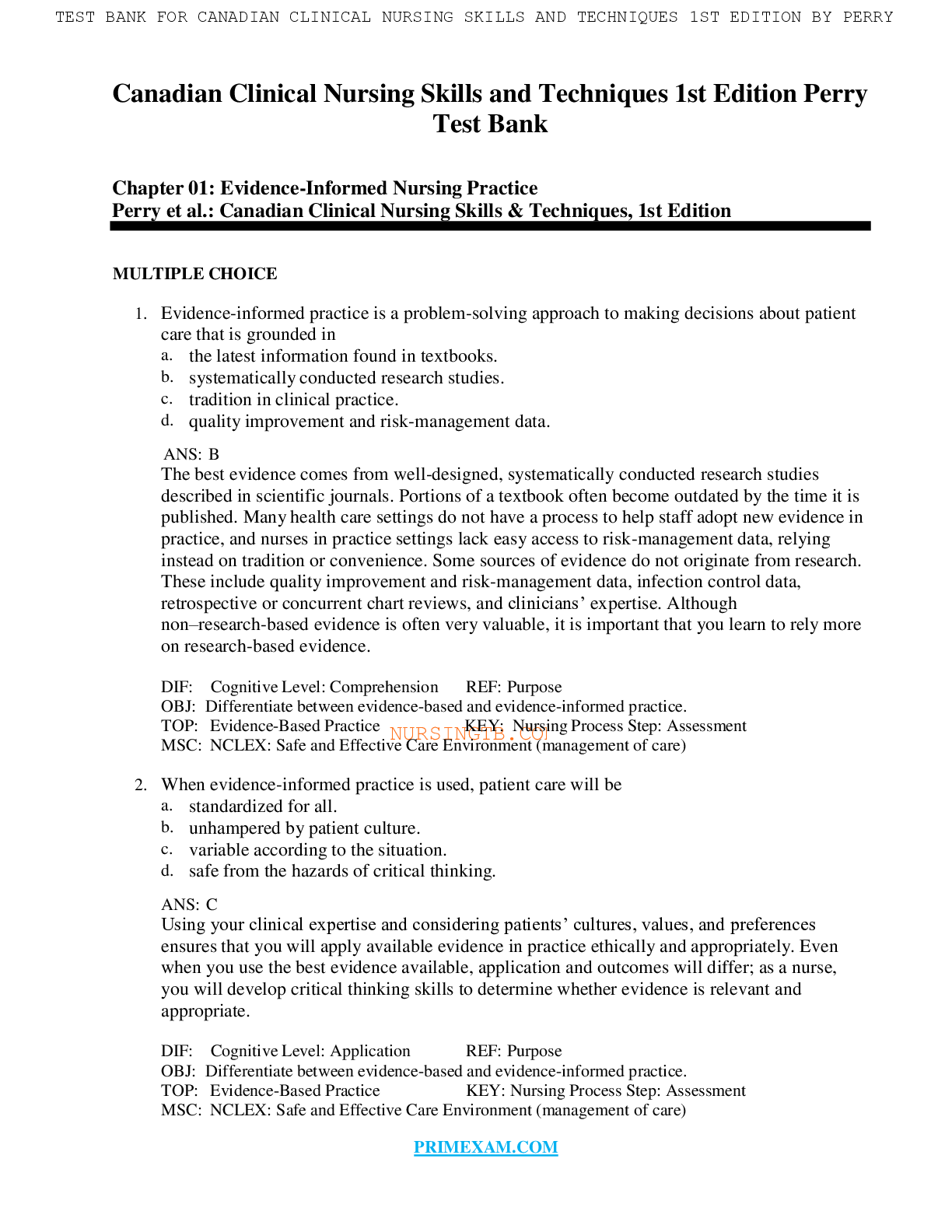

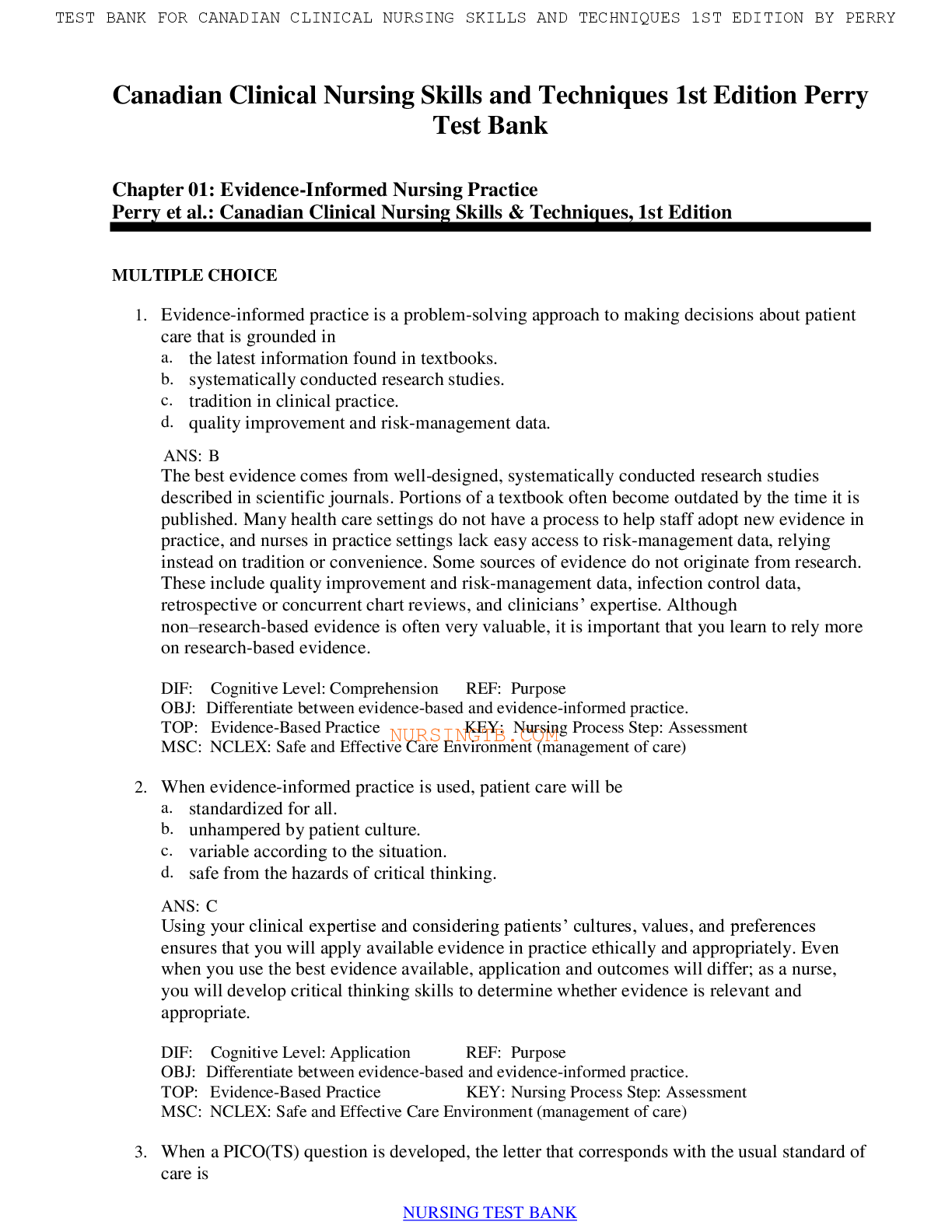

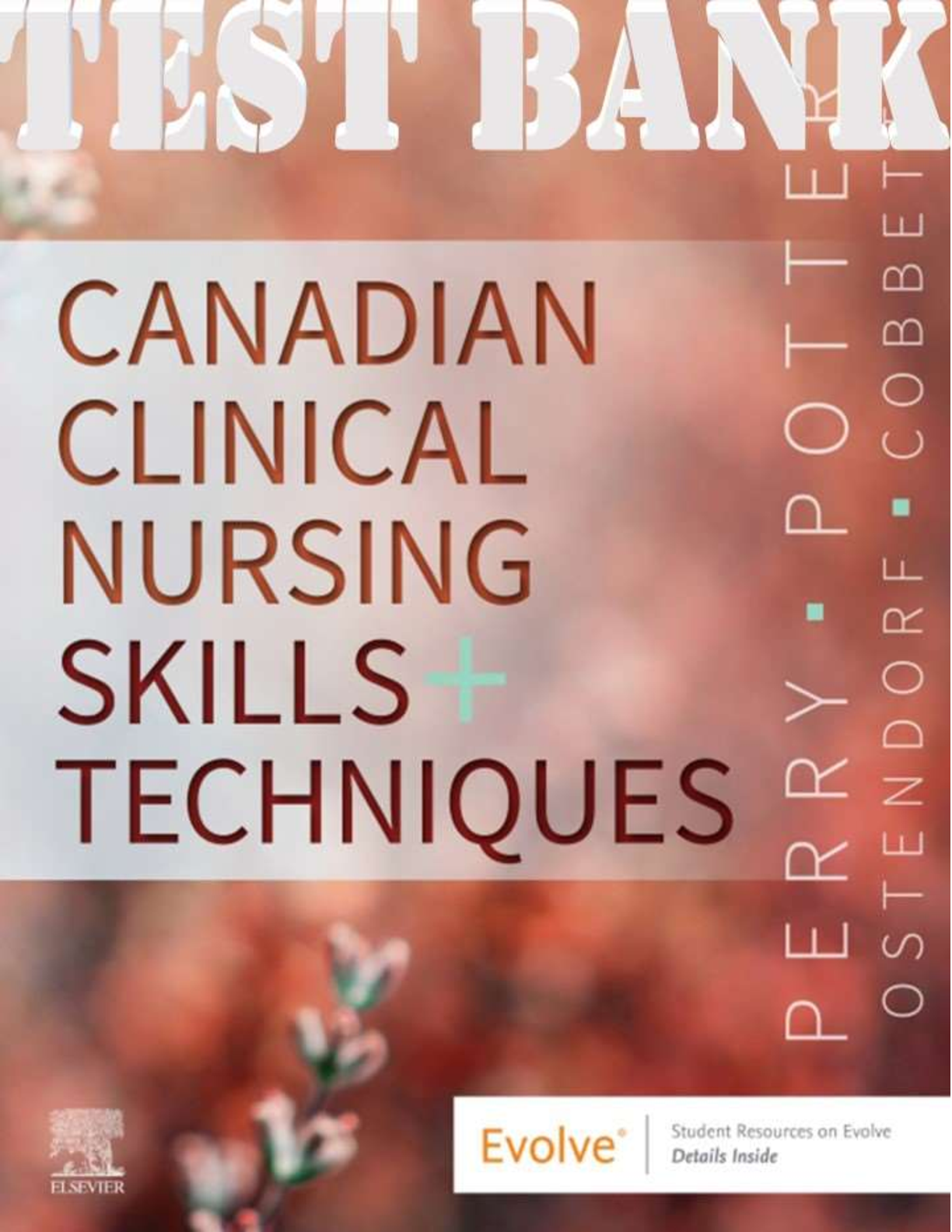
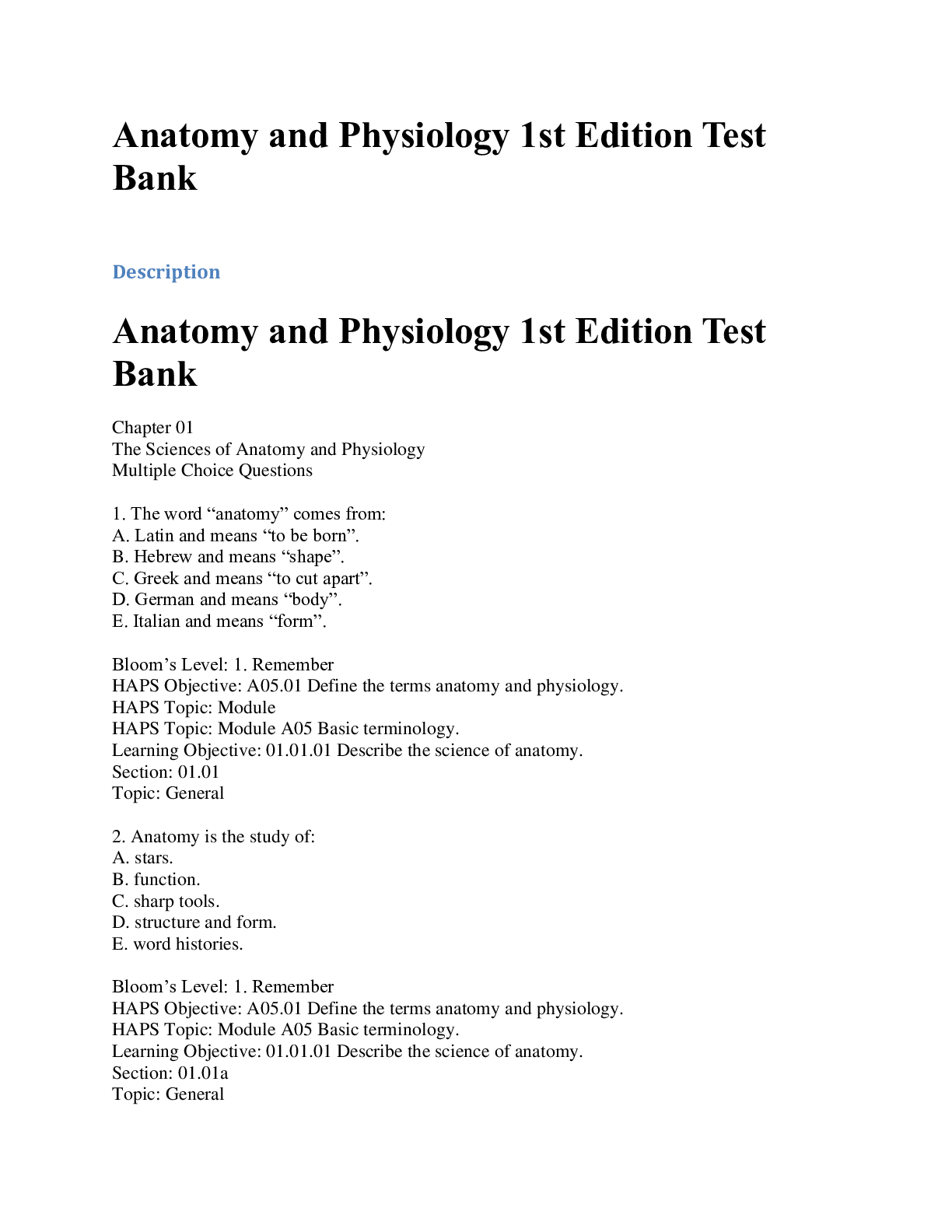


.png)
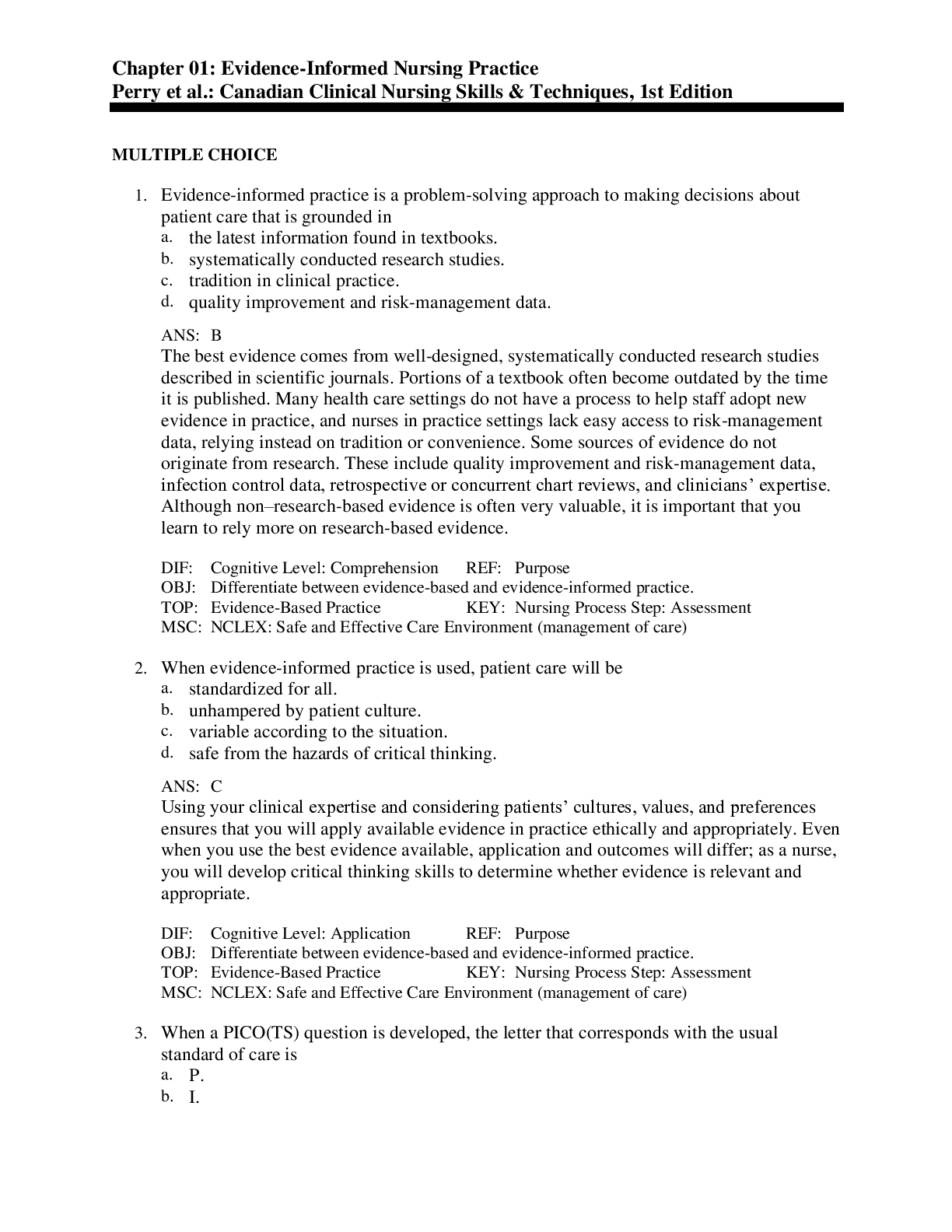

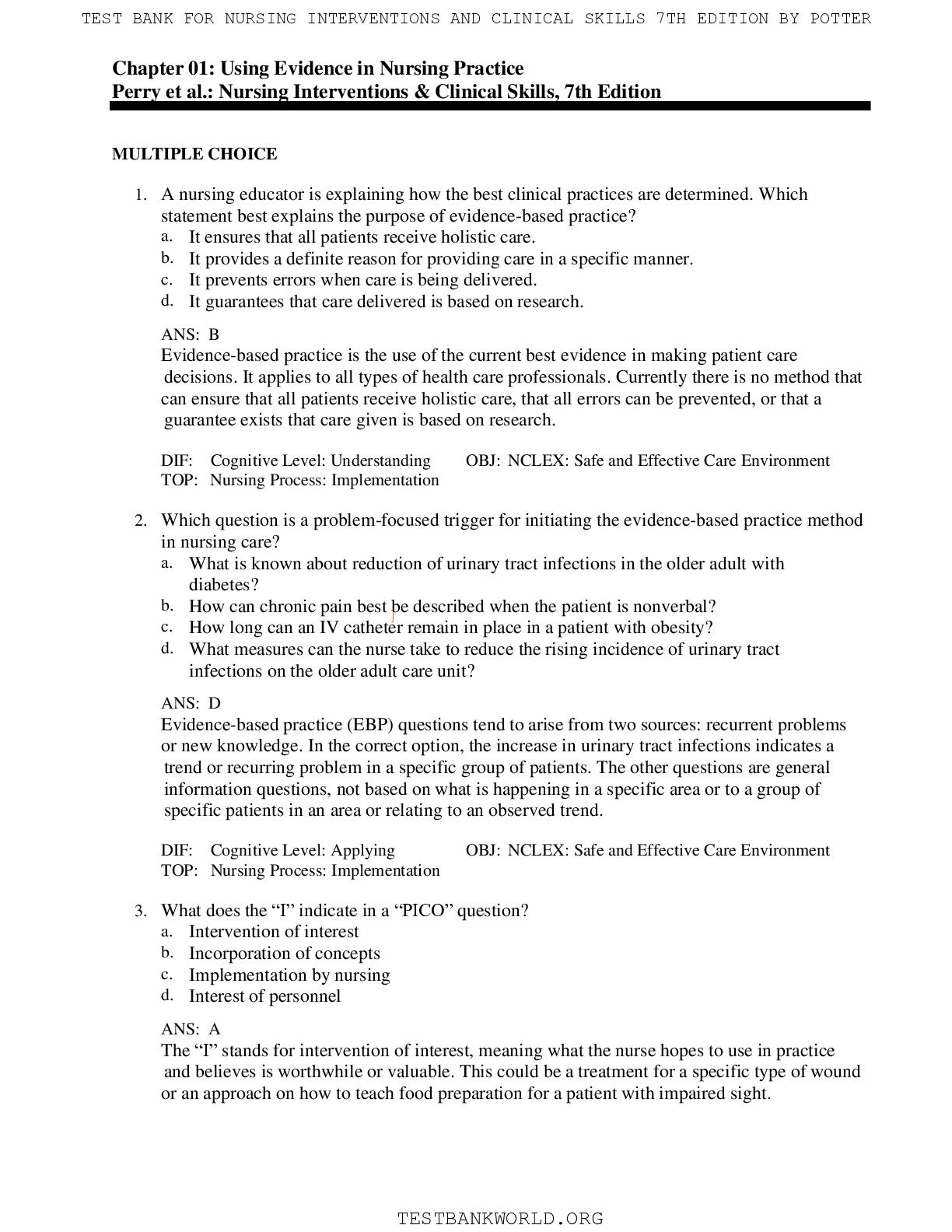
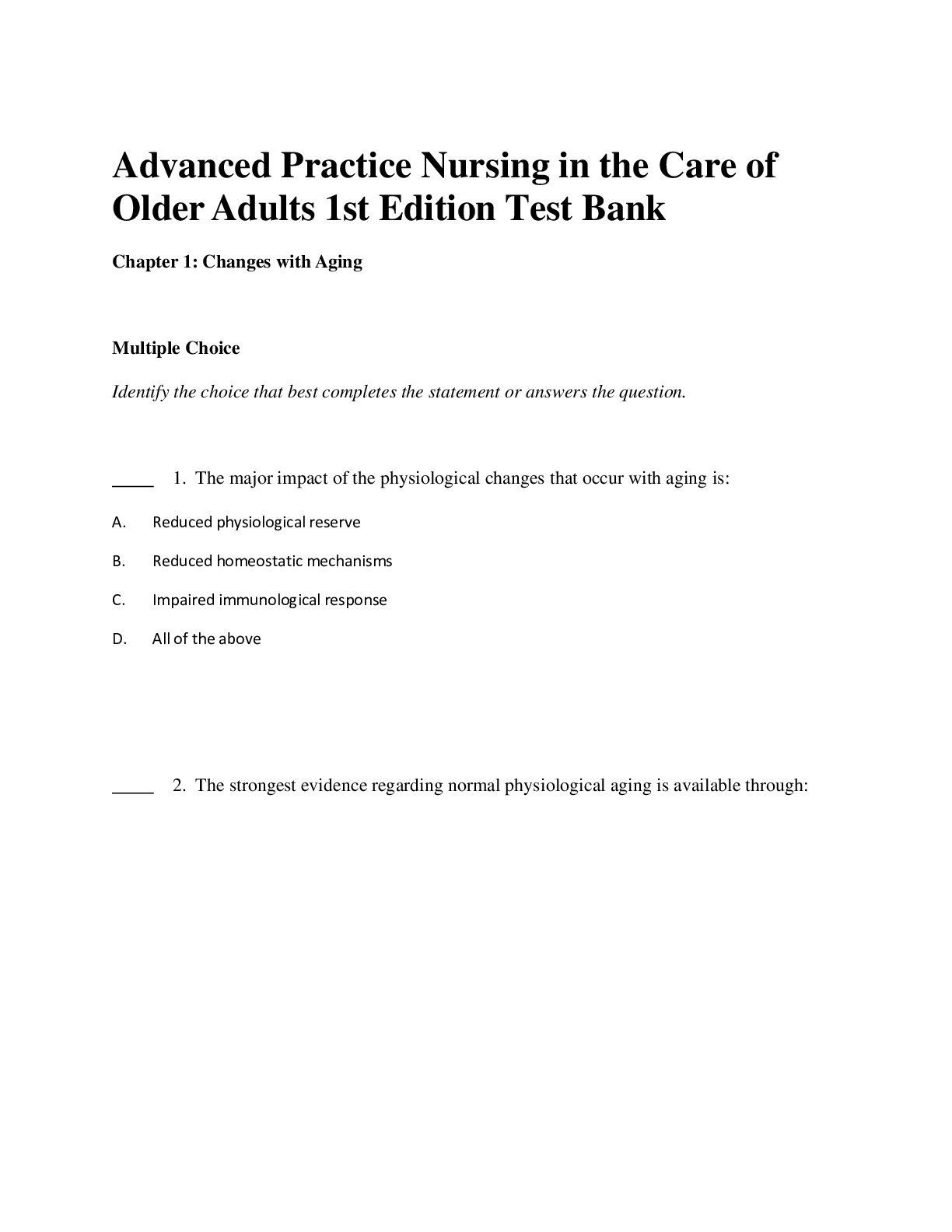


.png)

